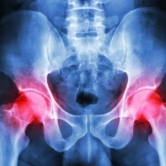5 Conditions Causing Your Shoulder Pain
Discover Effective Shoulder Pain Relief Today Frequent appointments with a physiotherapist are suitable for people of all ages! Physiotherapy is a non-invasive, safe and effective treatment choice intended to improve movement and alleviate pain arising from a wide variety of work and sports injuries, musculoskeletal disorders, age-related conditions and more.…




